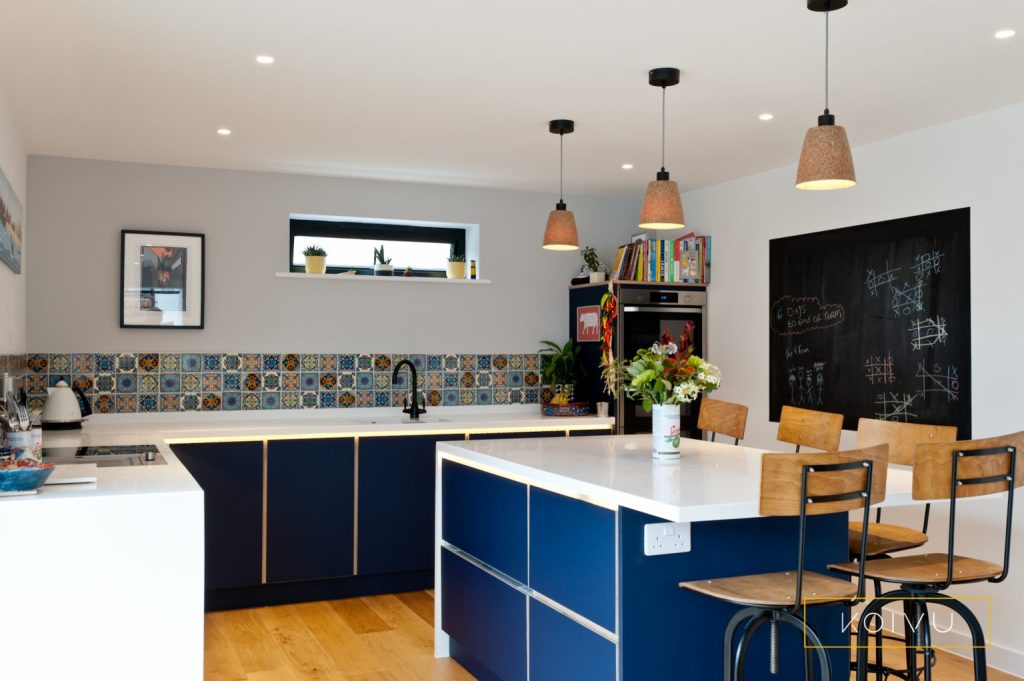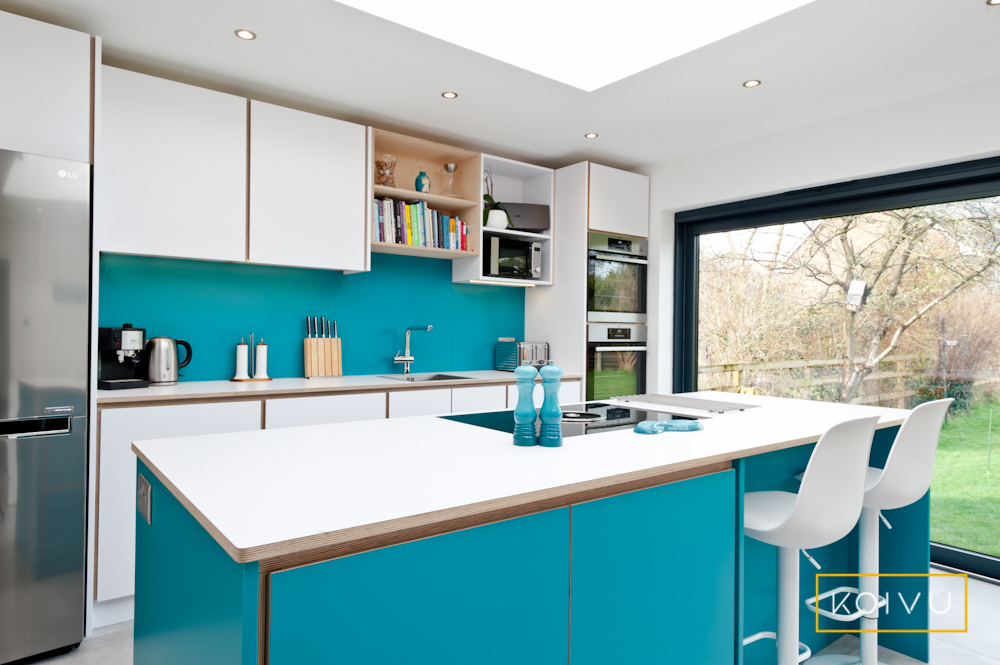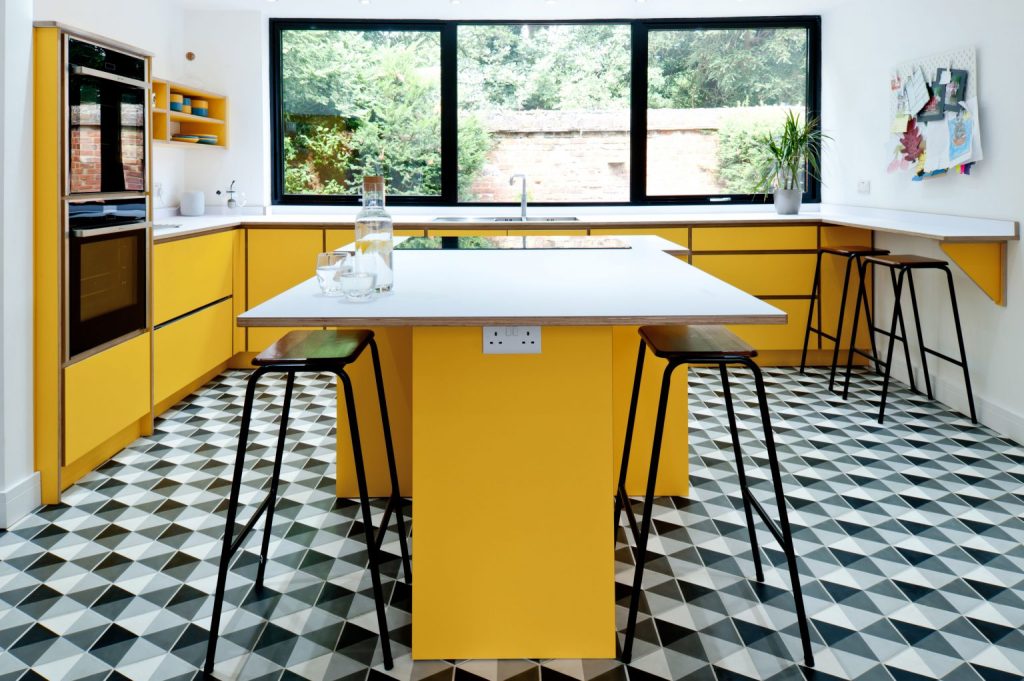How do you feel about kitchen islands? Do you have one in your current kitchen? Have you always dreamed of having one? Or do you prefer the idea of floor space or a large kitchen table?
There’s no getting away from the fact that kitchen islands have become a trend in the last few decades. And they show no signs of going out of fashion any time soon. So when we’re planning a new kitchen for a customer it’s often one of the first things they mention.
We understand though, that the idea of using up kitchen real estate in this way is not for everyone. There are plenty of other options. So how can you be sure to make the right decision for your kitchen design? Let’s look at the pros and cons.
The pros of a kitchen island
Additional work surface
One of the advantages of a kitchen island is the extra work surface it provides. That additional countertop means more space for meal preparation, baking, kneading, and other tasks. If you’re lucky it might even allow more elbow room for the family to help out.
Not only that, with the right design you’ll face towards the room while you’re working. And that means you can better chat to others in the room.
Increased storage
Kitchen islands often come equipped with cabinets, drawers, and shelves, providing plenty of storage space for pots, pans and anything else you want to hide away. We even fitted one kitchen island with deep fridge drawers.
This extra space can be particularly handy for smaller kitchens with fewer cabinets around the outside or limited pantry space.

More versatile functionality
A kitchen island can serve multiple purposes, adding versatility to your room. Choose a kitchen island with seating and it can double as a breakfast bar or casual dining area, offering a convenient space for quick meals or informal gatherings. Alternatively you could include your hob, oven or even sink within your kitchen island unit. That will leave your traditional worktops clutter-free and allow you to be more sociable while you’re working.
Worried about having an unsightly extractor fan hanging from the ceiling? Don’t be. Modern extractor designs, such as these integrated ones by Bora, are changing the game.
A social hub
A modern kitchen island acts as a functional and beautiful focal point for the kitchen or living space. Often creating a gathering spot for family and friends.
Whether it’s enjoying a cup of coffee, engaging in conversation while preparing meals, facilitating supervised homework time or hosting a casual get-together, the island becomes a central hub that gets people connecting and interacting.
The cons of a kitchen island
Space constraints
It is essential to carefully consider the size and layout of your kitchen before deciding on an island. In a smaller kitchen, a kitchen island may consume valuable floor space, making the room feel cramped, and restricting movement.
It might be that an alternative like a peninsula or a mobile kitchen cart is more suitable for balancing space and functionality.

Kitchen islands cost a lot
A kitchen island can add a good deal to the cost of your kitchen project. It may be a ‘standalone’ piece, but it will still require cabinetry, cupboard doors and countertops, as well as bar stools or chairs if you decide on a kitchen island with seating. If you end up requesting a custom design that’s unique or complex in some way, you’ll find the cost is even greater.
Limited design flexibility
It’s not always possible to add a kitchen island into a design, no matter how much someone wants us to. Sometimes it simply won’t work practically or aesthetically.
Some kitchen rooms simply lack the necessary space, or have structural limitations that make it challenging to incorporate an island seamlessly. In these cases, forcing one into the design may disrupt the flow and harmony of the kitchen.

Whether or not a kitchen island is right for your kitchen ultimately depends on your needs, room layout, and personal preferences. For a larger kitchen with plenty of space, a well-designed island can provide lots of benefits in terms of functionality, storage, and social interaction. However, in smaller kitchens, or those with limited space, alternatives or creative design solutions may be more appropriate.
Either way, our experienced designers will be able to help you work through the options available to you and create a wonderful kitchen that makes the most of the space you have. Get in touch to find out more.




